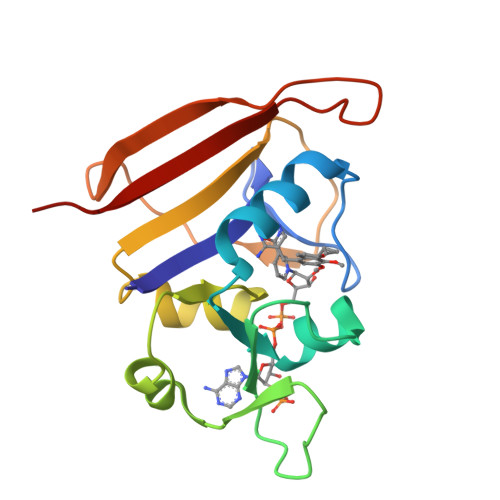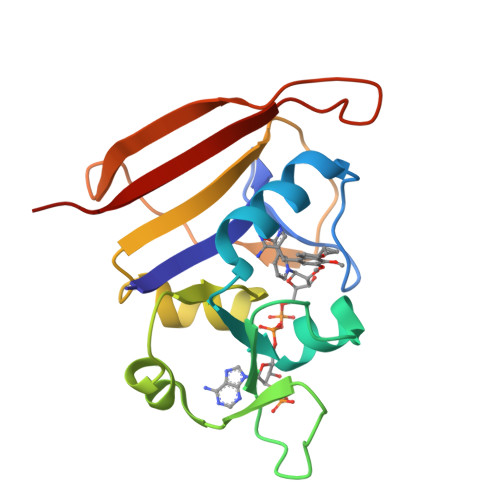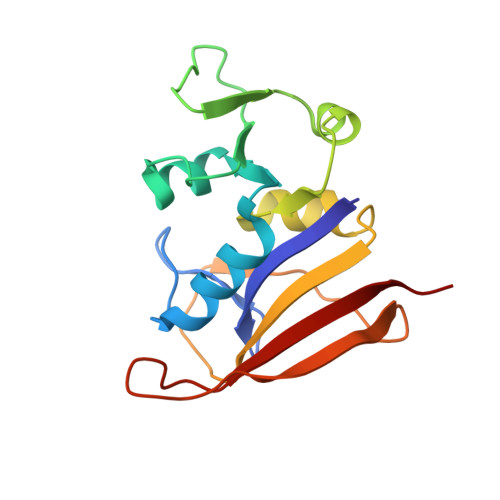Inhibitory properties and X-ray crystallographic study of the binding of AR-101, AR-102 and iclaprim in ternary complexes with NADPH and dihydrofolate reductase from Staphylococcus aureus
Oefner, C., Parisi, S., Schulz, H., Lociuro, S., Dale, G.E.(2009) Acta Crystallogr D Biol Crystallogr 65: 751-757
- PubMed: 19622858
- DOI: https://doi.org/10.1107/S0907444909013936
- Primary Citation of Related Structures:
3FY8, 3FY9, 3FYV, 3FYW - PubMed Abstract:
Iclaprim is a novel dihydrofolate reductase (DHFR) inhibitor belonging to the 2,4-diaminopyrimidine class of antibiotics, of which trimethoprim (TMP) is the most well known representative. Iclaprim exhibits potent bactericidal activity against major Gram-positive pathogens, notably methicillin-sensitive Staphylococcus aureus (MSSA) and methicillin-resistant S. aureus (MRSA) phenotypes, including TMP-resistant strains. The inhibition properties of racemic iclaprim and of the two enantiomers, termed AR-101 and AR-102, towards S. aureus wild-type DHFR and TMP-resistant F98Y mutant DHFR were determined and compared. Similar to TMP, AR-101, AR-102 and iclaprim are all competitive inhibitors with respect to the substrate dihydrofolate. Iclaprim, AR-101 and AR-102 demonstrated little or no difference in activity towards these enzymes and were significantly more potent than TMP. The crystal structures of S. aureus DHFR and F98Y mutant DHFR were determined as ternary complexes with NADPH and either AR-101, AR-102 or iclaprim. The binding modes of the inhibitors were analysed and compared. The X-ray crystallographic data explain the binding modes of all molecules well and can be used to rationalize the equipotent affinity of AR-101, AR-102 and iclaprim, which is also reflected in their antibacterial properties.
Organizational Affiliation:
Arpida Ltd, CH-4153 Reinach, Switzerland.




















